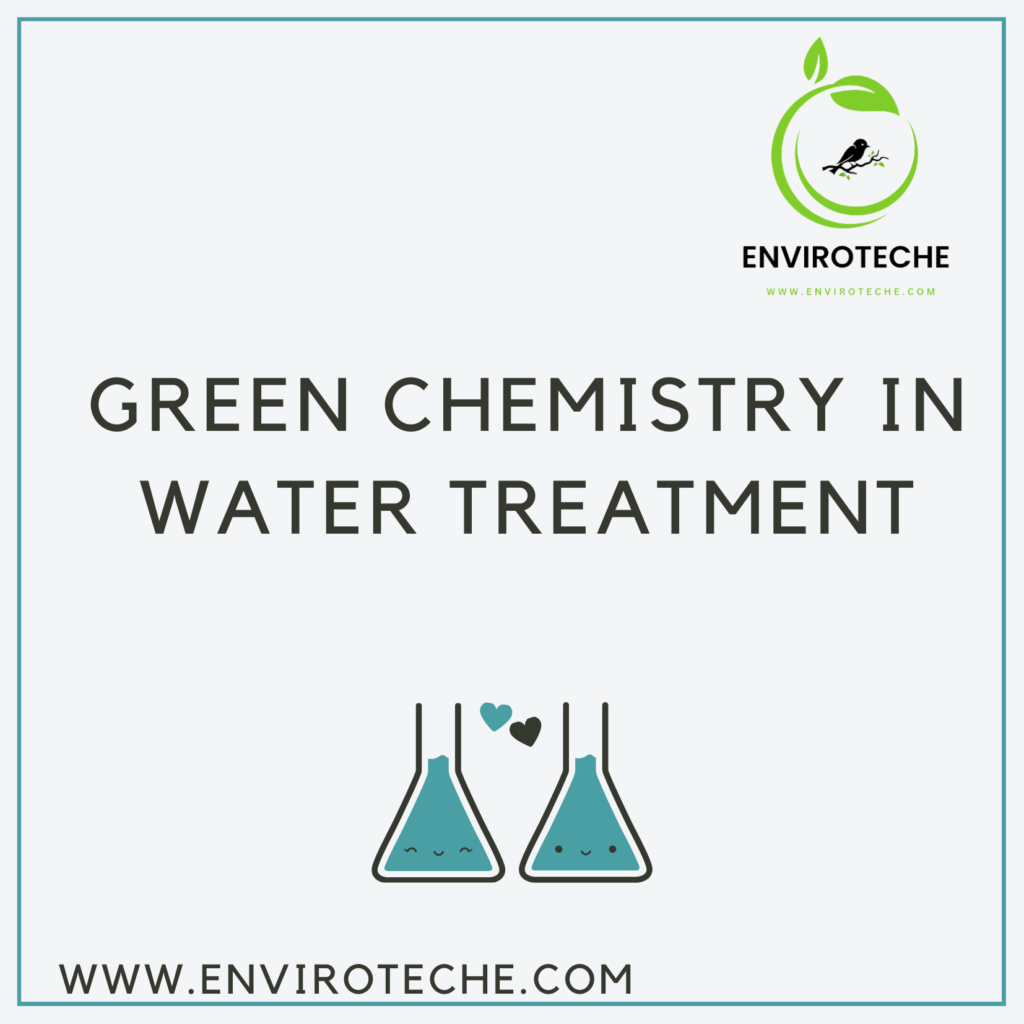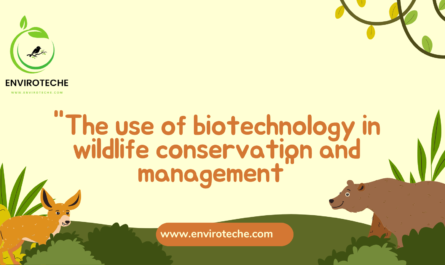
Muhammad Nouman1 , Muhammad Qasim2
1Department of Chemistry, Government Graduate College of Science Faisalabad
2Department of Environmental Sciences, Government College University Faisalabad
Abstract:
The preservation and protection of water, a vital resource for life, is essential to ensuring the health of both people and the environment. Water contamination has emerged as a major global issue as a result of growing industry and population expansion. There is a demand for sustainable alternatives because conventional water treatment techniques frequently rely on chemical processes that might have a harmful impact on the environment.
Introduction:
Community well-being and environmental protection depend on having access to clean, safe water (Mabhaudhi et al., 2019). The use of chemicals in conventional water treatment techniques, however, can be detrimental to both human health and the ecosystem. Green chemistry has gained popularity recently as a cutting-edge and environmentally friendly method of treating water. Green chemistry is a viable approach to advancing the production of clean and safe water by incorporating environmentally friendly procedures and technologies (Wang et al., 2021).
We shall discuss the idea of “green chemistry” in water treatment and its possible advantages in this blog article.
Understanding Green Chemistry:
The goal of green chemistry, often referred to as sustainable chemistry, is to create chemical products and processes that consume and produce hazardous compounds as little as possible. It focuses on creating risk-free substitutes, cutting down on waste, and saving resources.
In terms of overall goals, Green Chemistry in wastewater treatment aims to reduce the environmental impact of the treatment processes, use less dangerous chemicals, prevent waste generation, maximize energy efficiency, take into account the entire lifecycle of the processes, and encourage the use of renewable resources and cutting-edge technologies (de Marco et al., 2019). Adopting these principles paves the way for more environmentally responsible wastewater treatment methods that safeguard ecosystems and public health.
Harmful Effects of Conventional Water Treatment:
Conventional water treatment techniques can have a number of negative consequences on the environment and people’s health, despite being effective at making water fit for human consumption. A frequent disinfection method is chlorination, which produces disinfection byproducts (DBPs) such as trihalomethanes and haloacetic acids that have been connected to higher risks of cancer and reproductive problems (Park et al., 2016).
Additionally, pollutants like aluminum, which has been linked to neurological diseases, might enter the water through the use of chemical coagulants and flocculants in traditional wastewater treatment techniques. Additionally, the release of treatment byproducts into water bodies, such as sludge and leftover chemicals, can endanger aquatic ecosystems.
Furthermore, many developing contaminants like pharmaceuticals and personal care items, which may find their way into sources of drinking water and eventually affect human health, might not be completely removed by traditional water treatment. In general, while conventional water treatment achieves its goal of supplying safe drinking water, it also relies on chemical additions and poses a risk of environmental damage, which emphasizes the need for alternative and more environmentally friendly methods.
Green Chemistry Solutions in Water Treatment:
By utilizing sustainable and ecologically friendly methods, green chemistry solutions for water treatment seek to reduce the environmental impact of water treatment operations. The creation of substitute, less dangerous chemicals for water treatment is a major topic of focus. Chlorine and other hazardous chemicals are frequently used in traditional water treatment methods, which can be harmful to aquatic ecosystems and human health.
With safer and more environmentally friendly substitutes like hydrogen peroxide, ozone, or ultraviolet light, which may successfully disinfect water without leaving hazardous residues, green chemistry aims to replace these dangerous compounds. Green chemistry also places a focus on reducing waste creation and using renewable resources. To encourage flocculation and remove suspended particles from water, for instance, bio-based coagulants made from organic materials like chitosan or plant extracts can be employed in place of standard metal-based coagulants.
Green chemistry also encourages the creation of water treatment techniques that use less energy. To reduce energy use and increase water recovery, techniques like membrane filtration, adsorption, and advanced oxidation can be optimized. Another important component of green chemistry in water treatment is water recycling and reuse, which lowers the general need for freshwater resources.
The recovery of pure water from wastewater streams can be made possible by implementing cutting-edge technology like forward or reverse osmosis. Overall, green chemistry approaches to water treatment aim to establish environmentally sound and sustainable practices that not only guarantee the provision of safe and clean water but also reduce the industry’s environmental impact.
Benefits of Green Chemistry in Water Treatment:
Green chemistry has many advantages for treating water, revolutionizing how we handle pollution, and managing our water supplies. First off, it encourages the use of sustainable, ecologically friendly procedures that utilize fewer dangerous chemicals and produce less harmful waste.
Water treatment facilities may drastically lessen their environmental impact, conserve natural resources, and lessen the effect on ecosystems by putting green chemistry principles into practice. In addition, green chemistry techniques put an emphasis on the creation and development of novel, less-toxic materials and processes that stop pollution at its source, placing a higher priority on prevention than remediation.
By reducing the need for expensive and energy-intensive cleanup procedures, this proactive approach not only improves the efficiency and efficacy of water treatment but also contributes to long-term sustainability. The application of renewable energy sources, like solar or wind power, to power water treatment procedures is also emphasized by green chemistry, which lessens reliance on fossil fuels and lowers greenhouse gas emissions.
Infrastructure that is more dependable and ecologically conscientious is made possible by the incorporation of renewable energy sources into water treatment systems. Additionally, green chemistry promotes the creation of novel materials and technologies that can improve the efficacy of water treatment, such as enhanced filtration systems, membrane technologies, and nanomaterials, allowing for the more precise and selective removal of impurities.
These developments have the potential to lower the amount of chemicals and energy needed to treat water while raising its overall quality. Last but not least, green chemistry fosters interdisciplinary and collaborative approaches, drawing together scientists, engineers, decision-makers, and stakeholders to create comprehensive approaches to water treatment.
The adoption of integrated and sustainable solutions to tackle the complex issues related to water pollution and scarcity is made possible by this collaborative mentality, which fosters information sharing and innovation. The implementation of green chemistry concepts in water treatment ultimately paves the way for a more robust and sustainable water management system in addition to safeguarding human health and the environment.
Top of Form
Challenges and Future Outlook:
The future of green chemistry holds great potential for overcoming the difficulties associated with water treatment. The existence of pollutants and toxins that can impair ecosystems and human health is one of the biggest concerns in water treatment.
Traditional water treatment techniques frequently rely on chemical reactions that produce potentially dangerous byproducts and use up a lot of energy and resources. Green chemistry, on the other hand, emphasises the creation and development of procedures and materials that reduce or completely eradicate the usage and generation of harmful compounds, offering a sustainable and ecologically friendly method of treating water.
The prospects for green chemistry in water filtration are encouraging. Innovative green technologies and solutions that may successfully remove impurities from water while minimizing the environmental impact are actively being developed by scientists and researchers.
For instance, sophisticated oxidation techniques, such as photocatalysis and electrochemical oxidation, are being developed using green chemistry methods. These processes can effectively break down organic contaminants in water without the need for hazardous chemicals.
Conclusion:
By encouraging the creation and adoption of eco-friendly technologies and procedures, green chemistry offers a revolutionary method of treating water. Green chemistry has the potential to transform the water treatment sector and ensure that everyone has access to clean, safe water by lowering the use of harmful chemicals, reducing waste output, and saving resources. Adopting green chemistry principles in water treatment is crucial for ensuring public health, preserving the environment, and accomplishing sustainable development objectives.
References:
de Marco, B. A., Rechelo, B. S., Tótoli, E. G., Kogawa, A. C., & Salgado, H. R. N. (2019). Evolution of green chemistry and its multidimensional impacts: A review. Saudi pharmaceutical journal, 27(1), 1-8.
Mabhaudhi, T., Nhamo, L., Mpandeli, S., Nhemachena, C., Senzanje, A., Sobratee, N., … & Modi, A. T. (2019). The water–energy–food nexus as a tool to transform rural livelihoods and well-being in Southern Africa. International journal of environmental research and public health, 16(16), 2970.
Park, K. Y., Choi, S. Y., Lee, S. H., Kweon, J. H., & Song, J. H. (2016). Comparison of formation of disinfection by-products by chlorination and ozonation of wastewater effluents and their toxicity to Daphnia magna. Environmental Pollution, 215, 314-321.
Wang, H. M., Yuan, T. Q., Song, G. Y., & Sun, R. C. (2021). Advanced and versatile lignin-derived biodegradable composite film materials toward a sustainable world. Green Chemistry, 23(11), 3790-3817.
Check Other Schlorships:



need for real meds